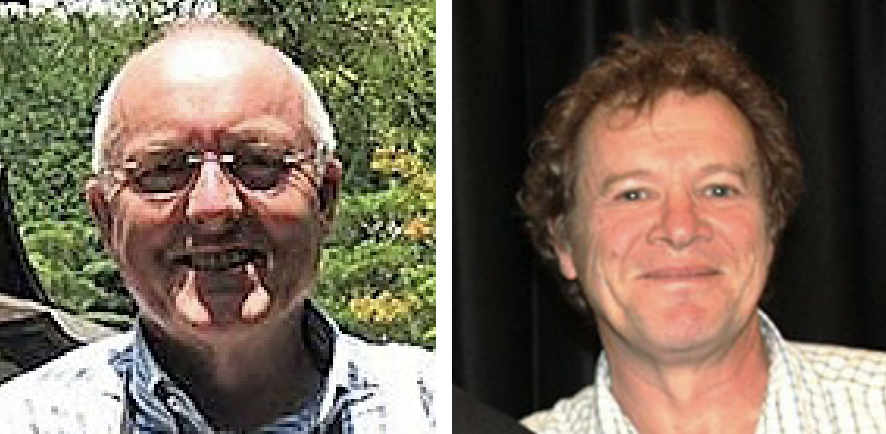Deepwater Systems, Ainsa Basin, Spanish Pyrenees: Application to Hydrocarbon Prospectivity and Unconventional Plays

INSTRUCTORS: Kevin Pickering, PhD and Steve Cossey, PhD
DISCIPLINE: Field Courses
COURSE LENGTH (DAYS): 5 Days
CEUS: 4.0
AVAILABILITY: Public & In-House
ATTEND AN UPCOMING CLASS:
Check back in periodically for updated field course dates!
WHO SHOULD ATTEND: Geologists, geophysicists, members of unconventional reservoirs study teams (engineers, team leaders and project managers), as well as mid-level to upper-level managers needing to learn more about petroleum systems, architecture, elements, reservoir properties and their explanation and production characteristics.
LEARNING OUTCOMES:
- Improve knowledge and understanding of deepwater depositional processes.
- Learn necessary terminology so that engineers and geologists can communicate effectively.
- Learn appreciation for reservoir and architectural element scale, dimensions and connectivity.
- Understand deep water architectural element variability away from the wellbore.
- Relate features that are observed in core to 3D features in the subsurface.
COURSE CONTENT:
Day 1
- Arrive in Barcelona
- Meet at 18.00 for introductions
Day 2
- Travel from Barcelona to Ainsa (4 hours with 30-minute comfort stop half way)
- Ainsa is located in the south-central Spanish Pyrenees. Ainsa is situated at the confluence of the Rio Cinca and Rio Ara, with spectacular views of the surrounding countryside and mountains including the high Pyrenees. Ainsa has a 12th-century church (Iglesia parroquial de Santa María, consecrated in 1181), an 11th-century castle (with a visitor centre, geological and ecological museums in the restored fortifications), and Placa Mayor dating from the 12th century that is surrounded by Medieval buildings, including restaurants, bars and souvenir shops. The old town provides an opportunity for sightseeing.During the 8th century the part of Aragón with Ainsa marked the northern limits of Al Ándalus. It is still disputed if Aínsa itself fell to the Moorish invaders, but many key battles were fought in the nearby hills. According to legend, in 724, the Christian troops, under King Garci Ximenez, were inspired to victory over the Moorish armies by the appearance of a burning cross above a holm-oak tree. In the fields behind Ainsa castle, there is village, a stone shrine (the Cruz Cubierta) that marks the spot where the vision is said to have occurred. The symbol of Ainsa is a burning oak tree.
- Panoramic viewpoint from Guaso church. Orientation, introduction to Ainsa Basin (Middle Eocene deep-marine sediments) and its tectonic context within the Pyrenean orogen
Day 3
- Ainsa Basin – submarine channel and related deposits
- Dos Rios – UCL Core Laboratory (completed in 2018) to view Well Ainsa 6 core drilled behind the Ainsa Quarry face (afternoon location)
- Viewpoint of seismic-scale submarine channel outcrops from across Rio Cinca (Ainsa II Fan)
- Ainsa Quarry ~ 1 km south of Ainsa to look at spectacular outcrops with a large range of sedimentary facies and depositional architecture
- Forcaz Stream, Ainsa II sandbody (fan) and associated thin-bedded deposits, plus Well Labuerda 2. (time permitting)
Day 4
- Ainsa Basin – submarine channel and related deposits
- Viewpoint from Usana village of Ainsa, Morillo and Guaso sandbodies (fans)
- Arro channelised sandy fan, along road from Arro to Los Molinos
- Charo Canyon (feeder system for Arro Fan)
- Formigales shelf-margin canyon-head deposits
- Gerbe II sandy fan deposits at Gerbe (axial-channel to channel-margin deposits)
Day 5
- Jaca Basin – submarine lobes and related deposits
- Broto waterfall outcrops in submarine lobe and related deposits
- Megaturbidites (Cotefablo) and basin-floor deposits
- Fanlo lobe and related deposits
Day 6
- Ainsa Basin – deep-marine systems
- Rio Sieste. Morillo System MTDs and sandy fan lateral-accretion packages (LAPs)
- Mass transport deposits (MTDs) and channelized sandstones, Morillo I sandy fan, Rio Ara
- Viewpoint from Boltaña Castle (Castillo de Boltaña)
Day 7
- Ainsa to Barcelona
- Travel Ainsa to Barcelona (airport and or hotels)
